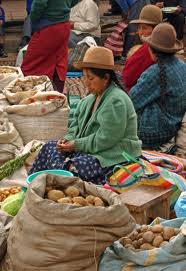 |
| The devastating progression of Smallpox. (From http://public.gettysburg.edu) |
The American Promise by J. Roark, M. Johnson, P. Cohen, S. Stage, and S. Hartmann, defines the Columbian Exchange as, "the transatlantic exchange of goods, peoples, and ideas that began when Columbus arrived in the Caribbean in 1492, ending the age-old separation of the hemispheres." (Roark, Johnson, Cohen, Stage, Hartmann G-2) This exchange would change European, and Native American life forever. Over all, the appearance of European colonists destroyed Native American cultures, and Native American cultures helped Europeans to become more wealthy and powerful. While there was much that crossed the Atlantic during this exchange, disease and technology had the largest effect on the Native Americans. It is obvious that the Native Americans were impacted the most by this exchange. Clearly, what impacted the Native Americans the most in this exchange was disease. This was not an intentional exchange between the Europeans and Native Americans, but it was certainly devastating to the Native Americans. The Europeans exposed the Native Americans to "Smallpox, Measles, Chicken Pox, Malaria, Yellow Fever, Influenza, and the Common Cold." (Tallant) These diseases devastated the Native American population. "Native Americans suffered 80-90%
population losses in most of America with influenza, typhoid, measles, and smallpox taking
the greatest toll in devastating epidemics that were compounded by the significant loss of
leadership."(
S.J. Crouthamel) These diseases had such a great impact on the Native Americans because they had not been exposed to these diseases before. Their immune systems were completely unprepared for these diseases that had been running rampant in Europe.
Another aspect of the Colombian exchange that changed Native American culture was the European technology. One piece of technology that impacted Native American culture was the plow. The plow coupled with an ox, horse, or other beast of burden could allow greater areas of land to be cultivated for farming with less effort. If a Native American people group could get a plow and a beast of burden (a horse or ox) they could grow more crops and would be able to shift from a hunter and gatherer society to an agricultural society. A second technological invention that changed Native American culture were the European weapons. European steel/iron knives and swords could be used many times, but Native American knives could only be used a few times before they would become brittle. Guns were also revolutionary to Native American culture. Guns were much more powerful than any of the Native American weapons. If a Native American group could get European knives and guns then they would have greater military power to protect themselves or defeat rival tribes. This new military might would have been especially appealing to warlike tribes such as the Mexica, who Dr. Tresa Holden describes as being "brutal". They also could hunt more efficiently. Guns would allow Native Americans to hunt larger animals and larger groups of animals when coupled with horses. (http://public.gettysburg.edu) These are just a couple of examples of how Native American culture was greatly changed by European technology.
 |
| From http://www2.palomar.edu |
On the other hand Native American culture had a positive impact on European wealth and power (even if it was not to the degree that the monarchs in Europe had hoped) There were two major aspects of Native American civilization that greatly helped the expanding European powers. One aspect was the crops that came from the New World to the Old World. Europe was introduced to "Corn, Potatoes, beans, tobacco, peanuts, squash, peppers, tomatoes, pumpkins, pineapples, cacao, chicle, papayas, manioc, guavas, and avocados." (Tallant) Two of these crops were especially important for Europe, potatoes and tobacco. Potatoes became very popular in Europe because they were resilient and could survive the cold climate in Europe, and could grow in less fertile soil. This allowed many poor people in Europe access to potatoes, which kept many people from starvation. Tobacco on the other hand did not provide any nutritional value, but it did help the Europeans economically. Europeans were surprised at the Native American practice of smoking, but it caught on very quickly, and continues to this day. The Chesapeake Colonies took advantage of this new fad and began growing large quantities of tobacco. This was very profitable for the Chesapeake Colonies and for England, who would export the surplus tobacco to other European nations. The crops that Native Americans had been growing for centuries proved to be very profitable for the Europeans.
Lastly, the Native Americans were themselves very profitable for Europeans. Europeans (mainly the Spanish) would conquer Native American Civilizations and use them in forced labor. The system of encomienda, and later repartimiento allowed the Spanish to exploit Native American people to meet their financial gains. While these practices were cruel, they helped the European colonies, and nations thrive economically. These are just a few examples of how the Colombian Exchange caused great destruction to Native American culture, and helped European nations become more powerful and wealthy.
Bibliography:
Crouthamel, Steven. www2.palomar.edu. Palomar College, 2003. Feb 2, 2013
Malone, Gray, Ross, and Ryan. public.gettysburg.edu. Getsburg College, Accessed Feb 2, 2013
Roark, Johnson, Cohen, Stage, and Susan Hartmann.
The American Promise. Boston: Bedford/St. Martin's, 2012. Print
Tallant, Harold. spider.georgetowncollege.edu. Georgetown College, Dec 12, 1998. Feb 2, 2013


No comments:
Post a Comment